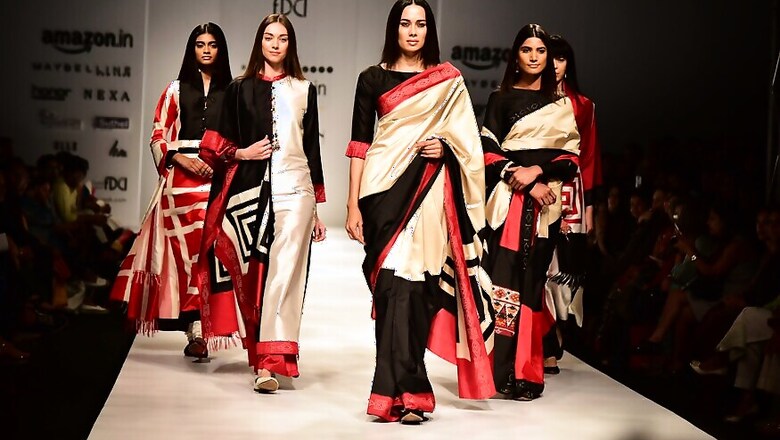
views
The Indian fashion industry is currently going haute with a reprisal of sorts. Rendering a modern twist to the indigenous handlooms, the designers predict a bright future for home-grown textiles and weaves.
Couturier Anju Modi reflects back on the time, not too long ago, when the future of handlooms did look quite bleak and credits the recent initiatives for bringing back the magic of Indian weaves.
"With the resurgence of textile-oriented policies and programs from Make In India to Khadi-focused movements as well as the focus on woven techniques like Benaresi brocades - there is a revival of traditional handlooms and the future looks very promising," she says on the sidelines of the recently concluded Amazon India Fashion Week 2017.
Designer duo Hemant and Nandita believes that one needs to support PM Modi's campaign in its entirety to make it successful. "We constantly try to promote Make In India campaign at our level. This definitely promotes Indian artisans and weavers and we think it needs support in all it's entirety to be a success."
Tarun Tahiliani, known best for his intricate blending of old and new, sees a glowing future for the industry and is affirmative about a terrific market for handloom. "There seems to have been a revival and frankly, a woman can go out looking like a million bucks in a three thousand rupees sari or a five thousand rupees sari, I don’t have a price point, but it’s constructed and tailored fashion that is much more expensive because there are many more skills involved in that."

According to him, there seems to be a pan-nationalist movement in progress because most people have realised, "Indian colours, patterns and motifs do suit Indian women more than most other things that they wear from around the globe.''
He also urges government to invest more money in the handloom sector. "The government should teach them how to update the technology or the materials used to make them more conducive and user friendly to contemporary life,'' he adds.
"The Indian craftsmanship is probably unparalleled to any in the world,'' he says on being asked if Indian textiles and craftsmanship are now making a mark on the global front.
He further points out that it's not so much for tailoring, but because of certain embroideries and stuff Indian designers can do with the manipulation of fabric and textures that makes it a league apart.
Another veteran designer Madhu Jain, on the other hand, has no qualms in accepting that even though Indian weaves is now a “dying-out craft”, certain initiatives can help improve the situation.

“The first generation of weavers, they don’t have a second generation. They don’t want their children to take on so you’ve to make it lucrative enough to continue the legacies of the family – you’ve to give them incentives.”
She’s of the view that Indian textiles and weaves have already made a mark on the global platform with so many international designers coming to India for sourcing but adds that the priorities of Indian buyers and designers need to change.




















Comments
0 comment